Thermal labels have brought about a significant shift in how businesses of all scales manage their inventory, shipping, and logistical tasks. Direct thermal printing technology eliminates the need for ink or toner and is environmentally friendly, making it an ideal choice for modern businesses. In a world that is increasingly aware of environmental sustainability, offerings like Rollo’s eco-friendly, FSC-certified thermal labels have taken center stage in modern business operations.
Table of Contents
What Are Thermal Labels?
Simply put, thermal labels are a kind of specialized label that harnesses the power of a heat-sensitive material and a thermal printer to generate top-notch prints. What sets these labels apart from the crowd is their unique printing methodology – rather than depending on ink or toner as traditional printers do, they utilize heat to imprint images or text onto the labels. This process works by applying heat directly to the label, which reacts with the heat-sensitive material to produce desired print. Because of their resilience in the face of diverse temperatures and environmental settings, these labels have carved out a niche for themselves as a preferred choice across a range of sectors, including retail, healthcare, shipping, logistics, and more.
📌 Are Thermal Labels Better?
Absolutely, yes. Thermal labels pack a punch with a multitude of advantages over their traditional counterparts. First off, they are a boon to your budget since they completely skip the need for ink or toner. They also boast speedy printing capabilities, making them a perfect match for businesses juggling large-scale printing jobs. But perhaps one of their standout qualities is their smudge-proof nature, guaranteeing that the labels stay crisp and easy to read, no matter what.
What is the Use of Thermal Labels?
Thermal labels find use in a broad range of applications. Whether it is product identification, barcode printing, shipping labels, or name tags, you will find thermal labels in action. Owing to their durability and superior print quality, these labels have become a trusted ally for businesses that require precise tracking and identification.

The Pivotal Role of Thermal Labels in Various Applications
Thermal labels have taken a central role in modern industries, with their diverse applications extending from inventory management to the efficient logistics of shipping. The accurate tracking and identification they provide make them an invaluable asset to any business. Let’s delve into the various uses of thermal labels to understand why they have become such an integral part of commercial operations.
🛍️ Product Identification
Every product in a retail setting, be it a grocery store or a high-end boutique, needs to be identifiable. This identification is key to smooth inventory management and efficient point-of-sale transactions. Thermal labels, with their clarity and durability, offer an excellent solution for product labeling.
With thermal labels, businesses can print barcodes, product descriptions, pricing, and other essential product information. This allows for quick scanning at the checkout and makes inventory management significantly more manageable. The labels’ durability also means that they can withstand handling by multiple customers, maintaining their legibility and integrity. Thermal labels achieve the desired print quality for product descriptions and barcodes, ensuring precise and clear information.
📇 Barcode Printing
Barcode printing is another crucial application of thermal labels. Barcodes contain product-specific information that can be quickly read and deciphered by a barcode scanner, making them integral to efficient store operations. They are used in various sectors, from retail to healthcare, helping streamline processes and improve accuracy.
Thermal printers are especially suited to barcode printing as they offer high-definition prints, ensuring that the barcodes are accurately reproduced and easily scannable. The elimination of ink or toner also means there is no risk of smudging or distortion, ensuring the barcode’s integrity.
📦🏷️ Shipping Labels
The shipping and logistics industry has greatly benefited from the advent of thermal labels. Shipping labels are a critical part of any shipment, containing vital information such as the sender’s address, recipient’s address, tracking number, and other relevant details.
The print clarity provided by thermal labels is crucial in this context. The labels need to withstand various conditions during transit while remaining legible. They also need to be durable enough to adhere to different packaging materials. Thermal labels meet all these requirements, providing reliable and high-quality shipping labels.
🪪 Name Tags and Badges
In events, conventions, or workplaces where identification is essential, thermal labels serve as an efficient solution for creating name tags or badges. Their high print quality ensures that the names and details are easily readable, while their durability makes them suitable for wear throughout the event or workday.
Whether it’s for one-time use at events or repeated use in workplaces, thermal labels prove to be a cost-effective and reliable option. The ability to print on demand also makes them a convenient solution for such applications.
🗄️Other Uses
Aside from the primary uses highlighted above, thermal labels also serve several other purposes. They are used in laboratories for specimen identification, in hospitals for patient wristbands, and in libraries for book labeling. In each of these contexts, the need for durable, high-quality, and reliable labels is paramount, and thermal labels rise to the occasion.
In conclusion, the diverse applications of thermal labels across different industries underscore their value. From efficient inventory management to seamless logistics operations, thermal labels have significantly contributed to streamlining processes and improving operational efficiency.
📌 ✒️ Do Thermal Labels Need Ink?
No, thermal labels do not require ink or toner. Instead, they utilize a unique heat-sensitive material that darkens when subjected to a certain temperature. This heat-based printing mechanism eliminates the requirement for ink cartridges, which can be expensive and need regular replacement. The absence of ink also means there’s no risk of smudging or blotting, ensuring a clean and clear print every time. This technological advantage makes thermal printers an economical and efficient choice for businesses with high-volume printing needs.
Understanding the Characteristics of Thermal Labels
As efficient as thermal labels are, it’s vital to understand their characteristics to use them effectively. They are designed to respond to heat, which means they can be affected by their storage environment and the conditions they are exposed to during use. Different thermal labels may also have different sensitivities to heat, resulting in varying print qualities. Understanding these characteristics will enable you to select the right thermal labels for your specific requirements and ensure their proper handling and storage for optimum performance.
📌 ⌛ How Long Do Thermal Prints Last?
The longevity of thermal prints is primarily dependent on the conditions they are exposed to. In an ideal environment—clean, dry, and away from direct sunlight—thermal prints can retain their quality for several years. However, elements such as excessive heat, direct sunlight, and abrasive conditions can cause the print to fade prematurely. To ensure the durability of the print, thermal labels should be stored and used in conditions that do not subject them to undue heat or harsh physical contact.
📌 ☀️ Do Thermal Labels Fade in the Sun?
Yes, thermal labels can fade over time when exposed to direct sunlight. The UV radiation in sunlight generates heat, which can activate the heat-sensitive material in the labels, leading to fading. Although thermal labels are designed for durability, they are not invincible. It’s advisable to store and use thermal labels away from prolonged direct sunlight to prevent premature fading and maintain their print quality.
📌 ❓How Do I Know If My Labels Are Thermal?
The simplest way to determine whether your labels are thermal is to perform a scratch test. By applying a bit of pressure and scratching the surface of the label with a coin or a fingernail, you can observe if it leaves a dark mark. The mark appears because the friction generates heat, activating the heat-sensitive material. This test provides a quick and easy way to confirm the nature of your labels.
📌 ⚫ Do Thermal Labels Turn Black?
Extreme heat or friction can indeed cause thermal labels to turn black. This is because the heat-sensitive material in the label darkens in response to such conditions. Excessive friction generates heat, leading to a similar reaction. It’s essential to handle thermal labels with care and store them in a suitable environment to prevent accidental activation and maintain their integrity.
📌 ☔ Can Thermal Labels Get Wet? Are Thermal Labels Waterproof?
While thermal labels are designed to resist mild exposure to moisture, they are not completely waterproof. Too much water can interfere with the heat-sensitive material and cause smudging or deterioration of the print. It’s recommended to keep thermal labels away from wet environments or ensure that they are adequately protected if they need to be used in such conditions.
📌 🌡️ What Temperature Do Thermal Labels Work?
Thermal labels work best at room temperature. Extreme temperatures—either too cold or too hot—can affect the heat-sensitive material in the labels, potentially leading to poor print quality or unintended darkening. It’s, therefore, crucial to use and store thermal labels at a moderate temperature to maintain their effectiveness and ensure high-quality prints.
📌 Do Thermal Labels Smudge?
Thermal labels have the significant advantage of not smudging, ensuring clear and reliable prints every time. This smudge resistance comes from the absence of ink or toner in the printing process, which is a common culprit for smudging in traditional printing. This makes thermal labels an excellent choice for applications requiring high-definition and durable prints, such as barcode labels.
📌 What Temperature Should Thermal Paper be Stored At?
Thermal paper should ideally be stored at room temperature. High temperatures can activate the heat-sensitive coating on the paper, causing it to darken, while extremely cold temperatures can damage the paper’s structure. It’s also recommended to store thermal paper in a low-humidity environment to prevent moisture absorption, which could interfere with the heat-sensitive coating.
📌 ♻️ Are Thermal Labels Recyclable?
Yes, thermal labels are recyclable. However, some thermal labels contain Bisphenol A (BPA), a chemical compound that could be harmful if released into the environment during recycling. While there are BPA-free thermal labels available, it’s important to understand the composition of your labels and dispose of them responsibly. As businesses continue to focus on sustainability, the demand for eco-friendly thermal labels, like the ones offered by Rollo, is growing.
NOTE: Rollo's thermal labels are BPA-FREE.
♻️ 🌎 Eco-Friendly Solutions by Rollo
In line with the global push towards more sustainable business practices, Rollo is at the forefront of providing eco-friendly, Forest Stewardship Council (FSC) certified thermal labels. We’ve developed a diverse range of products to cater to different business needs, all maintaining a commitment to environmental responsibility:
Thermal Barcode Labels (Various Colors)
These labels come in sizes of 2×1 inches and are compatible with FBA FNSKU / ASIN barcodes.
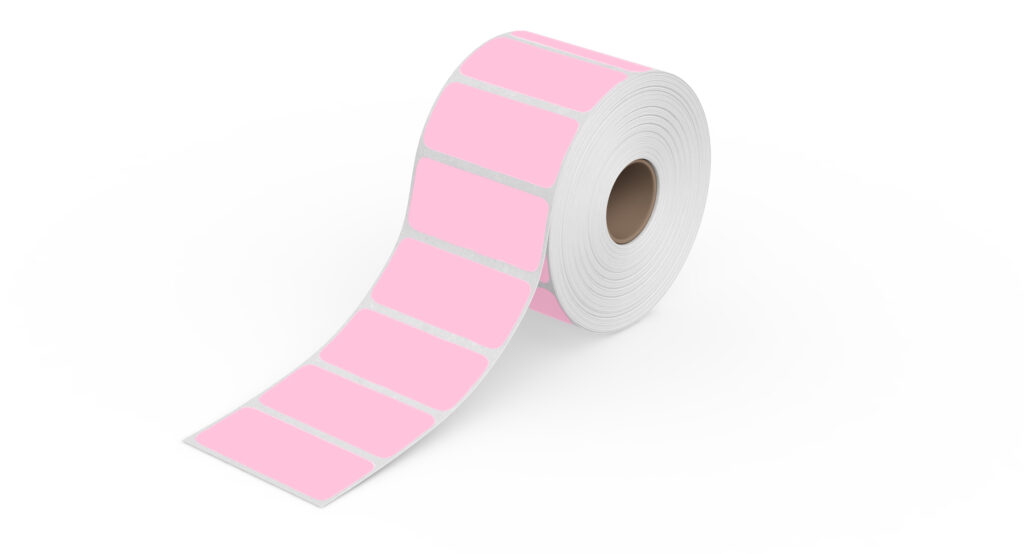
Label Size & Shape:
- 2×1 inches
- rectangular
Available in:
- white
- yellow
- pink
- purple
- green
- blue
Purpose:
- barcodes
- inventory tags
Type:
- thermal labels
- roll labels
- color labels
Count per pack:
- 1,000 per roll
Label Holder Needed:
- Yes, for all roll labels a label holder is required.
Circle Labels (Various Colors)
These versatile labels provide a vibrant way to organize and classify your products or documents.

Label Size & Shape:
- 2 inches
- circular
Available in:
- white
- yellow
- pink
- purple
- green
- blue
Purpose:
- stickers
- decoration
Type:
- direct thermal labels
- roll labels
- color labels
Count per pack:
- 1,000 per roll
Label Holder Needed:
- Yes, for all roll labels, a label holder is required.
Shipping Labels – Roll (White)
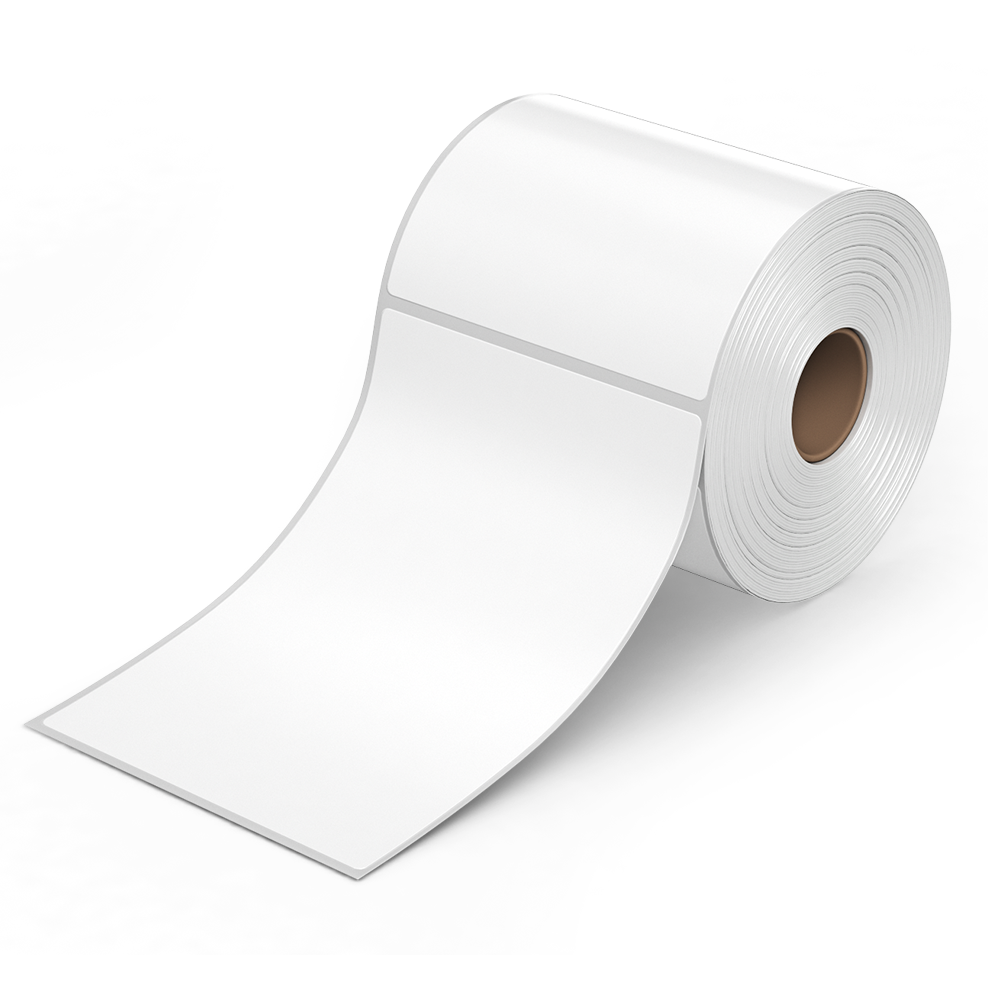
Label Size & Shape:
- 4×6 inches
- rectangular
Available in:
- white
Purpose:
- shipping labels
- logistics printing
Type:
- thermal labels
- roll labels
- eco-friendly – BPA-free and FSC-certified
Count per pack:
- 500 per roll
Label Holder Needed:
- Yes, for all roll labels, a label holder is required.
Perforated for easy tearing:
- Yes
Shipping Labels – Fanfold (White)
Made in the USA, these thermal labels do not require a label holder and are perforated for easy tearing.
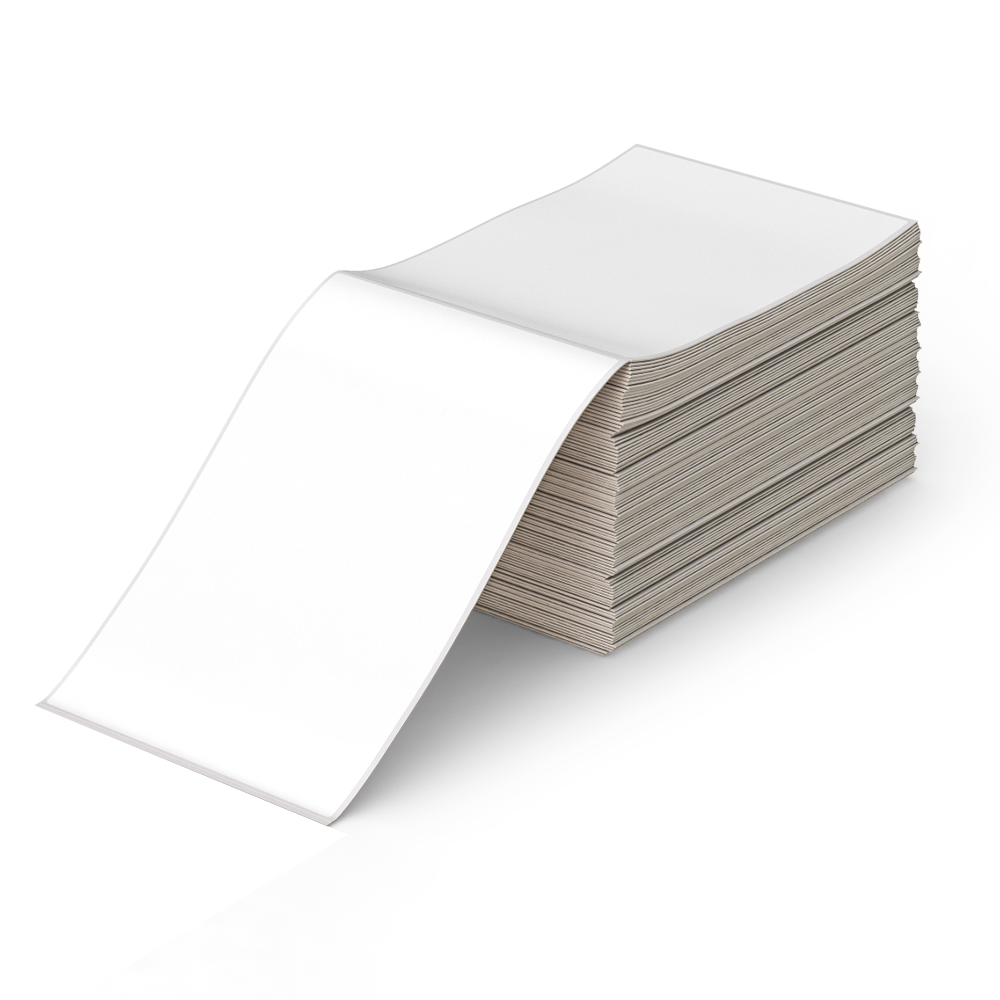
Label Size & Shape:
- 4×6 inches
- rectangular
Available in:
- white
Purpose:
- shipping labels
- logistics printing
Type:
- thermal labels
- fanfold labels, stack labels
- eco-friendly – BPA-free and FSC-certified
Count per pack:
- 500 per roll
Label Holder Needed:
- No
Perforated for easy tearing:
- Yes
Label Holder – For Roll Labels & Fanfold Labels
This hybrid label holder is designed for secure storage and easy use of your direct thermal roll or fan-fold labels. Easy to assemble, the holder measures 9 x 6 x 4.5 inches when fully set up, providing a compact solution for your label storage needs.
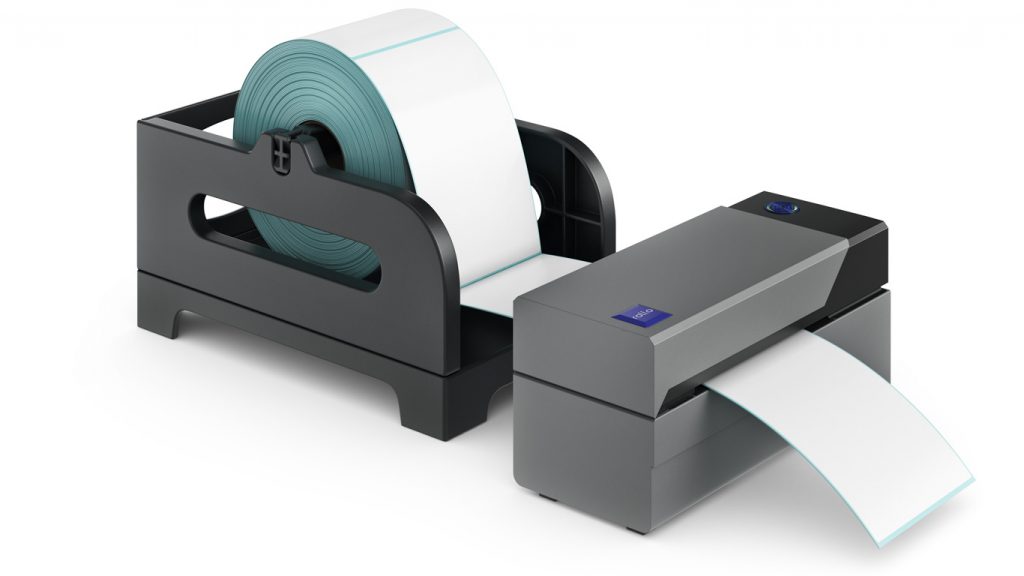
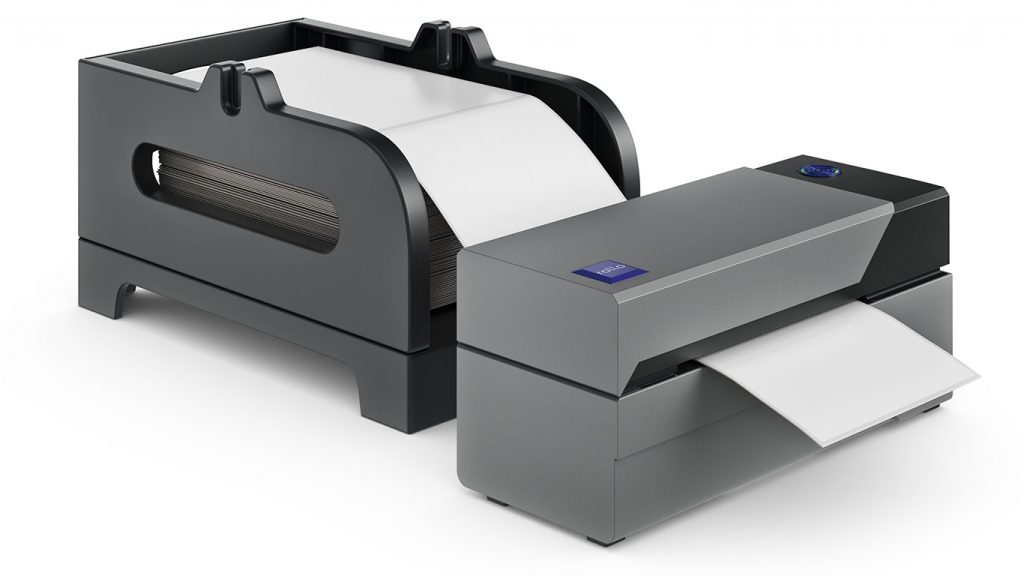
Auto Replenish on Fanfold 4×6 Thermal Shipping Labels
Rollo also provides a unique auto-replenishment service for its fanfold labels. For just $14.99 per month, Rollo will automatically send you stacks of labels, relieving you of the need to manually reorder them each month. You have the flexibility to stop or pause this service at any time. Subscribing to two packs of labels will also qualify you for free shipping.
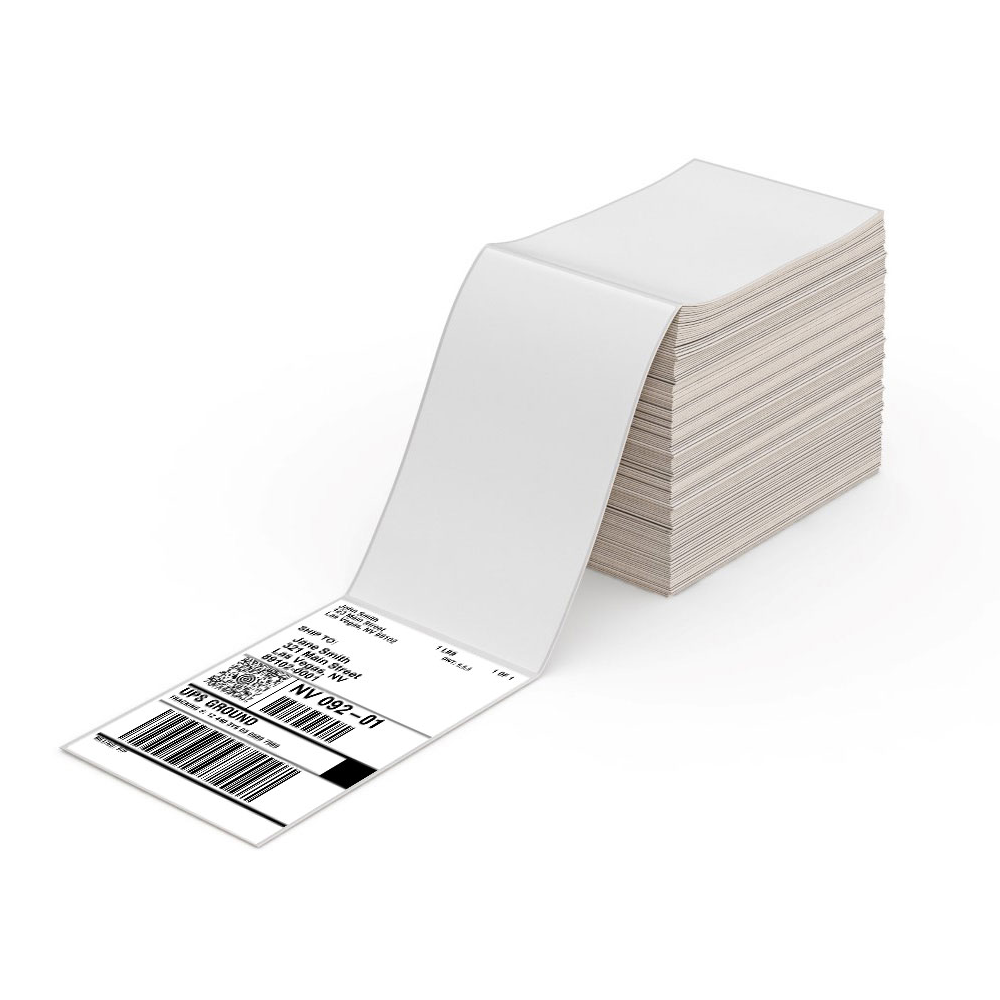
Rollo offers free shipping for orders $25 and up. If you purchase two packs of labels, you’ll qualify for this free shipping benefit.
Experience the convenience and efficiency of thermal printing today! Opt for eco-friendly thermal labels and contribute to sustainable practices while enjoying high-quality prints.
Explore Rollo’s array of thermal label products and find the perfect solution for your business needs.
Follow Rollo on:
Frequently Asked Questions
Q: 📑 What happens if you put normal paper in a thermal printer?
Short Reply: It won’t print.
A: ❌ Should you try to use regular paper in a thermal printer, you’ll find that it won’t result in any print output. This is because thermal printers operate by heating thermal paper, which comes with a unique heat-reactive coating – something that regular paper simply doesn’t have.
Q: 🖨️ Can you use thermal labels in a regular printer?
Short Reply: No, incompatible.
A: ❌ No, thermal labels cannot be used in a regular printer. Thermal labels are designed for thermal printers, which use heat to produce images and text. Regular printers use ink or toner, which won’t work properly on thermal labels.
Q: 🕯️Can you use thermal labels on candles?
Short Reply: Yes, with caution.
A: ✅ Yes, you can use thermal labels on candles. But remember, they don’t play well with high heat – it could make them turn black or fade. So, in a nutshell: handle with care.
When you know how to use them right, thermal labels can become a key part of your business operations. Opt for thermal labels if you’re on the hunt for a cost-friendly, high-quality, and eco-conscious labeling solution.
Even though thermal labels can go on candles, keep in mind that heat can mess with the print on the label. The best practice is to stick the labels on the glass or holder, not straight on the wax, and always keep them clear of the flame.


